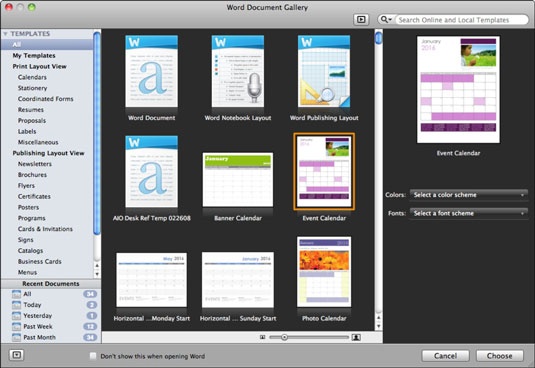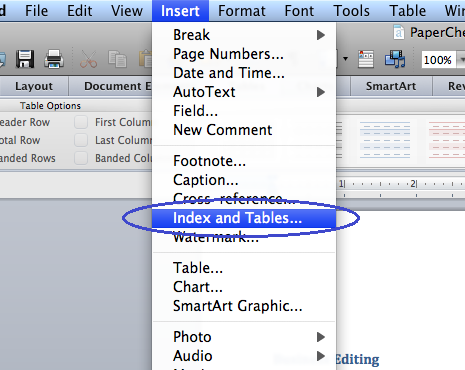Microsoft Word For Mac Notebook Setting
Microsoft Word 2000 RTF Macro Vulnerability Patch Patch a vulnerability in Word 2000 that could allow malicious code to run in a Rich Text Format (RTF) document without warning. You can change the default settings for new documents by making changes to the Normal template that new documents are based on. In Word for Mac 2011, on the Home tab, under. But the next time you create a new document, Word for the web will revert to the Normal margin setting of one inch on each side of the page. Create and use. The Get Help app in Windows 10 provides fast, free support for Microsoft products. Open Get Help app. Contact support in the browser instead. Tell us about the problem you're having and which product you're using. More support options. Business, IT & developer. Small & medium businesses, enterprises & partners, IT professionals,. Oct 08, 2012 I have recently bought a Mac book pro. Till now have been using a acer laptop. Can any one help with the following. I want to transfer all my data( mostly word, excel and photos) to my Mac. What software do i use to in Mac to be able to use the word and excel. Iam not computer savy so going nuts now. Select Full page of the same label. Select Print, or New Document to edit, save and print later. For info about merging data with labels, see Create mailing labels in Word by using mail merge or Mail merge in Word for Mac. If you want to make return address labels, see Create return address labels. One of the more interesting, and useful, Mac-only features in Microsoft Word is the Notebook Layout View. This view is used primarily for taking notes in a meeting, classroom, or any other note-worthy setting. To access Notebook Layout View, either Continue reading →.
What you need to install Windows 10 on Mac
Microsoft Word For Mac Free Download
- MacBook introduced in 2015 or later
- MacBook Air introduced in 2012 or later
- MacBook Pro introduced in 2012 or later
- Mac mini introduced in 2012 or later
- iMac introduced in 2012 or later1
- iMac Pro (all models)
- Mac Pro introduced in 2013 or later
The latest macOS updates, which can include updates to Boot Camp Assistant. You will use Boot Camp Assistant to install Windows 10.
64GB or more free storage space on your Mac startup disk:
On macOS Mojave 10.14.1, this is what I found: Microsoft Auto Update had 19 files on macOS in multiple directories, after I'd already removed it from /Library/Containers.You should remove those folders to completely remove the application and all it's traces. Option 1: Drag Microsoft AutoUpdate icon to the Trash. Open up the Finder, click Applications on the left side, and then select Microsoft AutoUpdate. Drag Microsoft AutoUpdate to the Trash (or right click on it and then select Move to Trash option). Right click the Trash icon and select Empty Trash. Mac os uninstall microsoft autoupdate. Jul 20, 2019 How to Remove Microsoft AutoUpdate from MacOS. From the Finder of MacOS, pull down the “Go” menu and choose “ Go To Folder ” (or hit Command+Shift+G) and enter the following path: Locate the folder named something like “MAU” or “MAU2.0” and open that directory. Locate and drag “Microsoft. How to Remove Microsoft AutoUpdate with MacRemover? Download Mac App Remover. 1 Download MacRemover. 2 Run it, select Microsoft AutoUpdate in the list of installed applications, then click the “Run Analysis” button. 3 MacRemover will analyze the installation information of Microsoft AutoUpdate.
- Your Mac can have as little as 64GB of free storage space, but at least 128GB of free storage space provides the best experience. Automatic Windows updates require that much space or more.
- If you have an iMac Pro or Mac Pro with 128GB of memory (RAM) or more, your startup disk needs at least as much free storage space as your Mac has memory.2
An external USB flash drive with a storage capacity of 16GB or more, unless you're using a Mac that doesn't need a flash drive to install Windows.
A 64-bit version of Windows 10 Home or Windows 10 Pro on a disk image (ISO) or other installation media. If installing Windows on your Mac for the first time, this must be a full version of Windows, not an upgrade.
- If your copy of Windows came on a USB flash drive, or you have a Windows product key and no installation disc, download a Windows 10 disk image from Microsoft.
- If your copy of Windows came on a DVD, you might need to create a disk image of that DVD.
How to install Windows 10 on Mac

To install Windows, use Boot Camp Assistant, which is included with your Mac.
1. Use Boot Camp Assistant to create a Windows partition
Open Boot Camp Assistant, which is in the Utilities folder of your Applications folder. Then follow the onscreen instructions.
- If you're asked to insert a USB drive, plug your USB flash drive into your Mac. Boot Camp Assistant will use it to create a bootable USB drive for Windows installation.
- When Boot Camp Assistant asks you to set the size of the Windows partition, remember the minimum storage-space requirements in the previous section. Set a partition size that meets your needs, because you can't change its size later.
2. Format the Windows (BOOTCAMP) partition

When Boot Camp Assistant finishes, your Mac restarts to the Windows installer. If the installer asks where to install Windows, select the BOOTCAMP partition and click Format. In most cases, the installer selects and formats the BOOTCAMP partition automatically.
3. Install Windows
Unplug any external devices that aren't necessary during installation. Then click Next and follow the onscreen instructions to begin installing Windows.
4. Use the Boot Camp installer in Windows
After Windows installation completes, your Mac starts up in Windows and opens a ”Welcome to the Boot Camp installer” window. Follow the onscreen instructions to install Boot Camp and Windows support software (drivers). You will be asked to restart when done.
- If the Boot Camp installer never opens, open the Boot Camp installer manually and use it to complete Boot Camp installation.
- If you have an external display connected to a Thunderbolt 3 port on your Mac, the display will be blank (black, gray, or blue) for up to 2 minutes during installation.
How to switch between Windows and macOS
Restart, then press and hold the Option (or Alt) ⌥ key during startup to switch between Windows and macOS.
This has been a point of great angst among Mac users as it requires them to call Microsoft each and every time they move the Office application from one machine to another.I believe the number in the US is: +1 (800) 936-5700. Install it using the installer just like you did on your old Mac. Transfer microsoft office 2011 to new mac. When prompted for the activation key, select 'activate by phone' and input nothing, keep trying and it should provide a number to call.Microsoft (unlike Adobe) does not have an automated system for licence deactivation.
Learn more
If you have one of these Mac models using OS X El Capitan 10.11 or later, you don't need a USB flash drive to install Windows:
- MacBook introduced in 2015 or later
- MacBook Air introduced in 2015 or later3
- MacBook Pro introduced in 2015 or later3
- iMac introduced in 2015 or later
- iMac Pro (all models)
- Mac Pro introduced in late 2013
To remove Windows from your Mac, use Boot Camp Assistant, not any other utility.
Smart Notebook 11 For Mac
For more information about using Windows on your Mac, open Boot Camp Assistant and click the Open Boot Camp Help button.
Smart Notebook Mac
1. If you're using an iMac (Retina 5K, 27-inch, Late 2014) or iMac (27-inch, Late 2013) or iMac (27-inch, Late 2012) with a 3TB hard drive and macOS Mojave or later, learn about an alert you might see during installation.
2. For example, if your Mac has 128GB of memory, its startup disk must have at least 128GB of storage space available for Windows. To see how much memory your Mac has, choose Apple menu > About This Mac. To see how much storage space is available, click the Storage tab in the same window.
3. These Mac models were offered with 128GB hard drives as an option. Apple recommends 256GB or larger hard drives so that you can create a Boot Camp partition of at least 128GB.